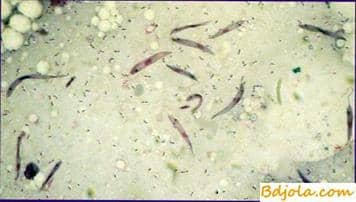Leptomonosis disorder of the intestine in bees

Leptomonosis is an invasive disease of the bees that causes the disorder of the intestines of adult bees.
The causative agent of the disease Leptomonas apis belongs to the subtype Plasmodroma, the class Rhizopoda, the order Amoebina, the family Trypanosomidae.
Leptomonas – a single-celled organism of the protozoan type, is an elongated, needle-shaped body, one end of which is obtuse, rounded, and the other is thin, ending with a single strand. This parasite has two nuclei (the main and blepharoplast). The main nucleus is located in the middle of the cell, and between it and the anterior end of the leptomonas body is the blepharoplast.
On the body of the leptomonas there is no wavy membrane, than it differs from trypanosoma. The length of the leptomonas together with the tourniquet reaches from 7-8 to 20-25 microns. The formless-shaped forms in length reach 5-6 microns. Leptomonas parasitizes the intestines of workers’ bees, drones, and less frequently queens. Foci of parasite accumulation can be detected with the naked eye on the epithelium of the small and rectum in the form of round glandular corpuscles of yellow or ocher-yellow color.
Prevention and control measures. The degree of harm done to bees by this parasite has not been studied, prevention and control measures have not been developed.
Leptomonosis disorder of the intestine in bees
